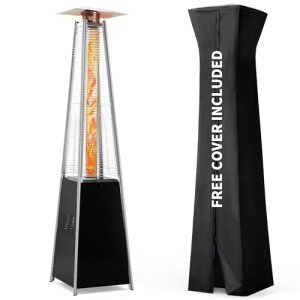Freestanding Stoves for Sale: The Ultimate Guide
Freestanding stoves, also called standalone stoves, are a significantly popular option for homeowners wanting to enhance the heating efficiency and aesthetic appeal of their living areas. They come in a myriad of designs, sizes, and fuel alternatives, providing versatility to fulfill the varied requirements of consumers. This article explores different aspects of freestanding stoves, including their advantages, types, and functions, together with a guide to purchasing the best stove.
What is a Freestanding Stove?
A freestanding range is a heating device that is not constructed into a wall or kitchen cabinetry. Rather, it stands individually in a room and can be positioned in different areas, making it a versatile heating service. These stoves can utilize various fuels, such as wood, gas, or pellets, and are created to offer warmth while boosting the atmosphere of an area.
Advantages of Freestanding Stoves
Freestanding stoves are preferred for numerous factors:
- Heating Efficiency: Freestanding stoves can produce significant heat output while being fuel-efficient.
- Aesthetic Appeal: With different styles ranging from traditional to contemporary, they can be a focal point in any space.
- Setup Flexibility: They can be positioned in varied locations, enabling simple integration into existing home layouts.
- Cost-Effective: Many freestanding stoves are less costly to install compared to integrated systems.
- Heat Distribution: They can efficiently disperse heat through the convection procedure, warming up the surrounding location.
Kinds Of Freestanding Stoves
Freestanding stoves can be found in various types based upon their fuel source, including:
| Type | Description |
|---|---|
| Wood Stoves | Use traditional wood logs for fuel, offering a rustic appeal and a special atmosphere. |
| Gas Stoves | Run utilizing natural gas or propane, providing convenient and controllable heating. |
| Pellet Stoves | Use compressed wood pellets as fuel, known for their efficiency and eco-friendliness. |
| Electric Stoves | Use electrical energy as a power source, available in various styles, frequently including modern styles. |
Secret Features to Consider
When looking for a freestanding range, numerous features should be taken into consideration:
- Heat Output (BTUs): Consider the size of the area you wish to heat and choose a stove with a suitable BTU rating.
- Size and Design: Ensure the stove fits the space and complements the room's decor.
- Fuel Type: Decide on the most hassle-free and cost-effective fuel type for your family.
- Efficiency Ratings: Look for the stove's efficiency scores (like EPA certification for wood stoves) to guarantee you're making an environmentally friendly choice.
- Safety Features: Consider designs with security features such as automobile shut-off, heat resistant glass, or low-clearance options.
Purchasing a Freestanding Stove
When thinking about buying a freestanding stove, it is vital to assess a number of important aspects to ensure you invest sensibly:
1. Spending plan
Setting a clear spending plan is crucial when shopping for a freestanding stove. Prices can differ commonly based on the type, brand, and functions:
- Basic Models: ₤ 800 - ₤ 1,500
- Mid-Range Models: ₤ 1,500 - ₤ 3,000
- High-End Models: ₤ 3,000 - ₤ 6,000+
2. Research Study Brands and Models
Comprehensive research study can help you discover various alternatives in the market. Some noteworthy brands in the freestanding stove industry consist of:
- Jøtul
- Quadrafire
- Regency
- Lopi
- Harman
3. Speak with Reviews
Read consumer reviews and professional ratings online to get insights into the efficiency and dependability of different models.
4. Regional Regulations
Check local building regulations and policies concerning stove installation, particularly for wood and gas stoves, to guarantee compliance.
5. Setup
Consider professional setup, particularly for gas or wood designs, as they often require special ventilation or flue systems.
Frequently Asked Questions About Freestanding Stoves
1. Are freestanding Best Fireplace Online to use?
Yes, when properly set up and kept, freestanding stoves are safe. Nevertheless, it's vital to follow the producer's guidelines and regional codes.
2. How do I preserve my freestanding range?
Routine upkeep includes cleaning up the flue or chimney, inspecting for obstructions, and making sure all components are working correctly. Yearly examinations by a certified specialist are recommended.
3. Can I utilize a freestanding stove as a primary heating source?
Yes, lots of property owners utilize freestanding stoves as primary heating sources, specifically in areas where traditional heating might be limited.
4. Are freestanding stoves energy-efficient?
Numerous newer models are created for high efficiency, using better heat retention and lower emissions compared to older models.
5. What is the average life expectancy of a freestanding range?
With proper upkeep, the typical life expectancy of a premium freestanding range can be around 15 to 20 years.
Freestanding stoves are a practical and stylish choice for heating homes. By comprehending the various types, advantages, and features readily available, homeowners can make educated decisions that fit their preferences and heating needs. Whether selecting a wood, gas, pellet, or electric stove, investing in a quality design will offer warmth, ambiance, and satisfaction for several years to come.

